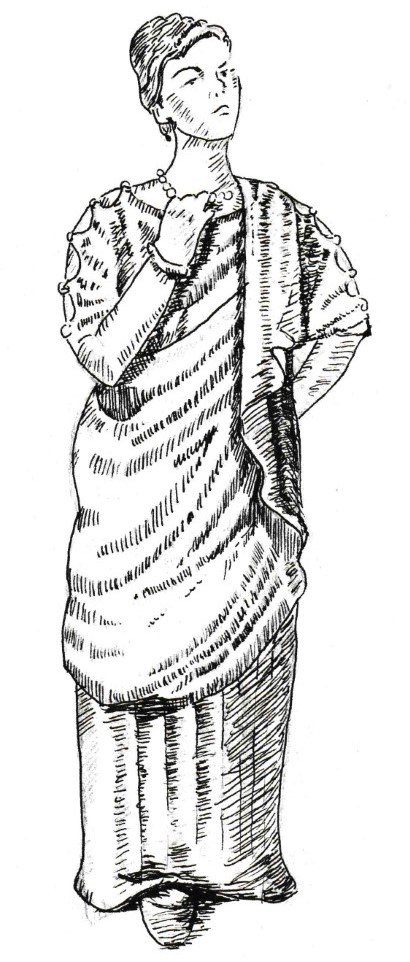Commanding Officer’s Wife
These teacher notes provide information on who the Commanding Officer’s Wife was. You can download a copy of these teacher notes below.
Download: Commanding Officer’s Wife PDF resource here (2.2 MB)

The commanding officer’s wife would probably have been in her mid-twenties whereas her husband would have been in his mid-thirties.
She probably came from a large town or city and would have found life on the frontier very different. The closest civilian town to Segedunum was Corbridge (at least 2.5 days travel) and the closest city was York (at least 3 days travel in summer and seven days in winter).
Life inside the fort could have been quite lonely for the commanding officer’s wife. She may not have mixed much with centurions’ wives who were the only other women living in the fort as they did not come from the same type of background as her.
In the Hadrianic period of the fort (c.126-138 AD), there were probably other commanding officer’s wives living at a fort at South Shields, 8km away by boat, or at the fort at Benwell, 9km by road (depending on time of year and type of transport taking anything from three hours to a day to get there).
From the 3rd century onwards, there would also have been another commanding officer’s wife living at the newly built fort at Newcastle. There may also have been women in the local area or vicus for her to socialise with, but as they were probably from a lower social class, she may have chosen not to socialise with them.
Officials visiting the commanding officer may have been accompanied by their wives. This could have provided further opportunities for the commanding officer’s wife to socialise and make friends.
Women’s fashion would vary from province to province. As the commanding officer’s wife came from the Mediterranean area, she would have dressed in the style of her native country rather than have adopted local fashion. She would have also wanted to show off her wealth and would have therefore worn jewellery, usually made of gold. Also, instead of using hairpins to tie up her hair in a bun as other Roman women would have done, she would have had her hair sewn into place.
Many Roman women made clothes for themselves and their families. They would have spent much of their time spinning to produce the thread to weave into cloth. As the spindle and distaff were symbols of womanhood in the Roman period, the commanding officer’s wife would have been taught to spin and weave as a girl. However, due to her position, she would have had slaves to do her work, and would make sure her female slaves spun a set amount of thread every day. She could punish a slave by giving her a large quantity of wool to spin.
The commanding officer’s wife would have had female slaves. Her slaves may have accompanied her from a previous posting, or she may have bought them locally or inherited them from the last commanding officer’s wife.
The slaves she brought with her would have been higher-ranking slaves for looking after her (dressing her, putting on makeup, putting on jewellery and clothes, emptying her chamberpot) and she would have had a closer relationship with them than with the slaves who swept the floor or weeded the garden.
The commanding officer’s wife was in charge of the house and slaves. It would be like running a small business, including planning meals, giving slaves access to locked stores, ensuring the house was clean and tidy, giving tasks to slaves, sorting out entertainment for guests, and dealing with any problems concerning the slaves.




